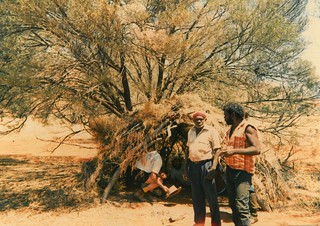Once humans started to become more conscious some 70,000 years ago, we started to ask deeper questions about human life, the nature around us, the stars above and the incredible universe. Our forebears were as much in awe of their environment as we are now.
For most of those 70,000 years, there was no scientific understanding of the natural world around us. As many of their experiences and observations were well beyond their comprehension it made sense for them to put external powers in place to explain natural phenomena.
We are calling this animism. This is the belief that objects, places, and creatures all possess a distinct spiritual essence. Potentially, animism perceives all things—animals, plants, rocks, rivers, weather systems, human handiwork, and perhaps even words—as animated and alive. Their spiritual beliefs were very much moulded around the way they experienced their environment.
What we see in the stories from the hunter-gathers people around the world is that they very much concentrate on moral issues and ethical behaviour within the possibilities and limitations of their environment. By doing the right things, as spirits and spiritual objects demand supported by trance, communal dances, magic, rituals and witchcraft, life will be better, and the environment will be more kind. Special people within the tribe (Shaman, Koradji, Wizards, Medicine Men) were able to interpret the magic and contact the outside powers.
These structures strengthened the cohesion and assisted in the survival of the tribe and as such they became the basis of the proto-religions. The moulding of spiritual beliefs around their environment and their society changed as these societies changed from tribes to cities and later to countries.
See also: Early beliefs, paganism, and religion in my section on the history on North-western Europe.
When I, in 1988, stayed for two weeks in Angatja, with the Pitjantjatjara people of the Central Dessert of Australia it was interesting to talk to Nganyinytja an Aboriginal elder and to discussed with her and other elders their belief system. She referred to the Dreamtime (Tjukurrpa) as being their history, religion, law, their presence, and their future. This goes way beyond the patronising thought that these beliefs are simply ‘interesting stories. It shows the deep thinking over very long periods of time that would have gone into their Tjukurrpa.

Importantly this experience also provides us with a window into belief systems from similar tribal societies from around the world. Most moral issues are universal. These people will have developed and interpreted life and their environment in similar ways. The Aboriginal belief systems have been developed over a period of 60,000 years, it just fascinating to contemplate that we, through the Tjukurrpa of the Australian Aboriginals, have access to these complex early belief systems.
Where societies became more complex so did their early belief systems, spirits changed gods and deities grew exponentially and the institutions around them grew more powerful. They were needed to interpret the often-conflicting messages from the gods. In places were cities evolved these belief systems became more and more institutionalised, and the functions of the shamans were taken over by a new cast of priests.